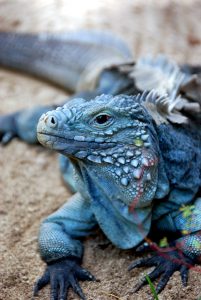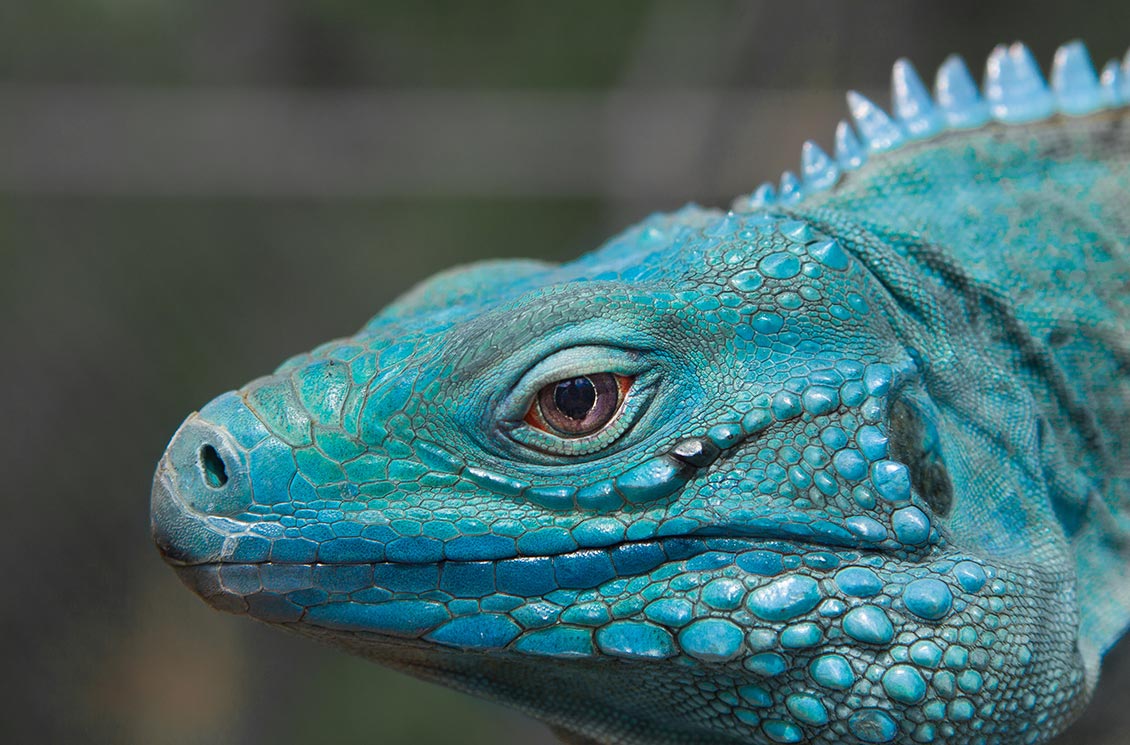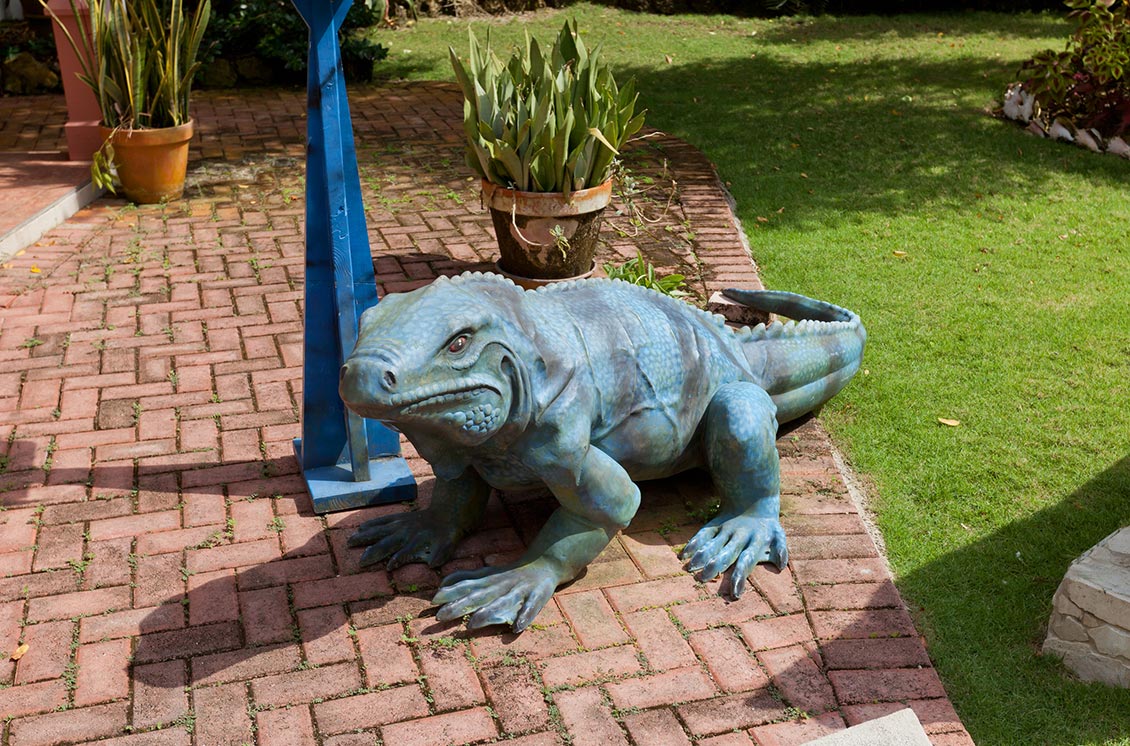Mention the phrase ‘blue iguana’, and the average listener will no doubt recall a busy nightclub, a tropical cocktail, or a mythical creature from the pages of a fantasy novel.
But here in Cayman, the words ‘blue iguana’ mean exactly what they say:
A giant dragon-like lizard. Decked out in brilliant blue.
A Cayman reptile’s storied past
From the mural at Royal Watler Cruise Terminal to the entryway at Queen Elizabeth II Botanic Park, the blue iguana often serves as a symbol of Cayman’s uniquely beautiful selection of breathtaking wildlife.
And with good reason.
The splendidly cerulean blue iguana (sometimes affectionately known as the ‘blue dragon’) is Cayman’s largest native animal and makes its home solely within Grand Cayman’s coastal terrain.
Travellers familiar with smaller iguanas in green or khaki camouflage should prepare themselves for a bit of a shock: the Cayman blue can reach over five feet in length (from nose tip to tail), and their colour is––you guessed it––a shocking shade of vibrant aqua that brightens during the mating season.
Blue iguanas tend to frolic among Grand Cayman’s rocks and scrubs, blending in with the stone and surf. They also tend to favour flora over fauna; their diet consists mostly of flowers, fruits, leaves, and stems (with the occasional insect thrown in).
But the blue iguana’s story isn’t all sunshine and snacks
Sadly, though the blue iguana once boasted a population in the tens of thousands, a combination of human activity and wild animal predation has placed the famous lizard in serious trouble, particularly over the last few decades. By 2001 less than thirty blue iguanas remained, and the International Union for the Conservation of Nature had officially placed the species on the ‘critically endangered’ list.
Caymanians step in to lend a hand
Luckily for Cayman’s baby blues, a handful of dedicated conservationists saw the evolutionary writing on the wall and decided to take action.

Managed by the National Trust for the Cayman Islands and housed in Queen Elizabeth II Botanic Park in North Side, Blue Iguana Conservation (BIC) is supported by international partners and stakeholders (including the International Reptile Conservation Foundation and the Wildlife Conservation Society). Its powerful work dating back to 1990 in both breeding and preservation has brought the blue iguana species from ‘critically endangered’ upwards to ‘endangered’ in a little over a decade (the official threat was downgraded in 2012).
Witnessing the blue iguana in action
For those hoping to see Cayman’s bluest mascot in person, BIC hosts a variety of tours for up-close viewing of its resident lizard. Casual fans of the blue iguana can take a walk through the BIC facility and learn more about the legendary creature from BIC wardens on the standard ‘Blue Iguana Tour’, which also allows for self-guided roaming on the Botanic Park grounds. There are likewise virtual tours available online for ‘zoom’-ed-in views of the BIC habitat.
Iguana aficionados looking for a more immersive adventure can sign up for the ‘Blue Iguana Warden Experience’, which lets visitors follow in the footsteps of BIC wardens as they go about their day-to-day activities and offer hands-on care to the iguanas living on site. Registration is required for both the online and ‘Warden Experience’ tours, so be sure to call ahead of time for tickets to those events.
The general ‘Blue Iguana Tours’ are conducted twice a day (10:30 am and 11:30 am) from Tuesday to Friday, with tickets available 15 minutes before the start. We recommend this tour for all blue iguana novices––especially as nothing quite beats the excitement of seeing these royally blue reptiles in the flesh.
Whichever tour you choose, don’t pass up your chance to get acquainted with Cayman’s most colourful and charismatic indigenous animal.
Their continued existence is a true Cayman miracle.
To learn more about BIC’s ongoing project to protect the blue iguana, visit the National Trust BIC website.
Follow the Trail
The Blue Dragon Trail, a collection of larger than life art installations, is a collaboration between the National Trust and the National Gallery. The project was created to draw attention to the plight of the endangered Blue Iguana.
The trail consists of fifteen blue iguana sculptures, each one colourfully painted by local artists. The eye-catching ‘dragons’ are dotted around Grand Cayman and can be found at popular island locations including Camana Bay, Rum Point, Smith’s Cove and Governor’s Beach. It’s a fun activity for families with young children, who are excited to discover each ‘Dragon’.



